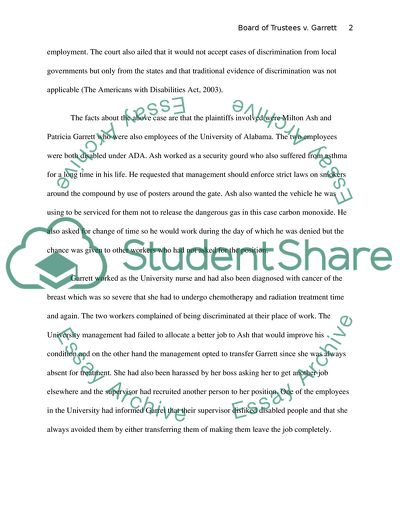Cite this document
(The 2001 U.S. Supreme Court case, Board of Trustees v. Garrett, which Essay, n.d.)
The 2001 U.S. Supreme Court case, Board of Trustees v. Garrett, which Essay. https://studentshare.org/miscellaneous/1738563-the-2001-us-supreme-court-case-board-of-trustees-v-garrett-which-explored-the-ramifications-of-the-americans-with-disabilities-act-1990
The 2001 U.S. Supreme Court case, Board of Trustees v. Garrett, which Essay. https://studentshare.org/miscellaneous/1738563-the-2001-us-supreme-court-case-board-of-trustees-v-garrett-which-explored-the-ramifications-of-the-americans-with-disabilities-act-1990
(The 2001 U.S. Supreme Court Case, Board of Trustees V. Garrett, Which Essay)
The 2001 U.S. Supreme Court Case, Board of Trustees V. Garrett, Which Essay. https://studentshare.org/miscellaneous/1738563-the-2001-us-supreme-court-case-board-of-trustees-v-garrett-which-explored-the-ramifications-of-the-americans-with-disabilities-act-1990.
The 2001 U.S. Supreme Court Case, Board of Trustees V. Garrett, Which Essay. https://studentshare.org/miscellaneous/1738563-the-2001-us-supreme-court-case-board-of-trustees-v-garrett-which-explored-the-ramifications-of-the-americans-with-disabilities-act-1990.
“The 2001 U.S. Supreme Court Case, Board of Trustees V. Garrett, Which Essay”. https://studentshare.org/miscellaneous/1738563-the-2001-us-supreme-court-case-board-of-trustees-v-garrett-which-explored-the-ramifications-of-the-americans-with-disabilities-act-1990.


